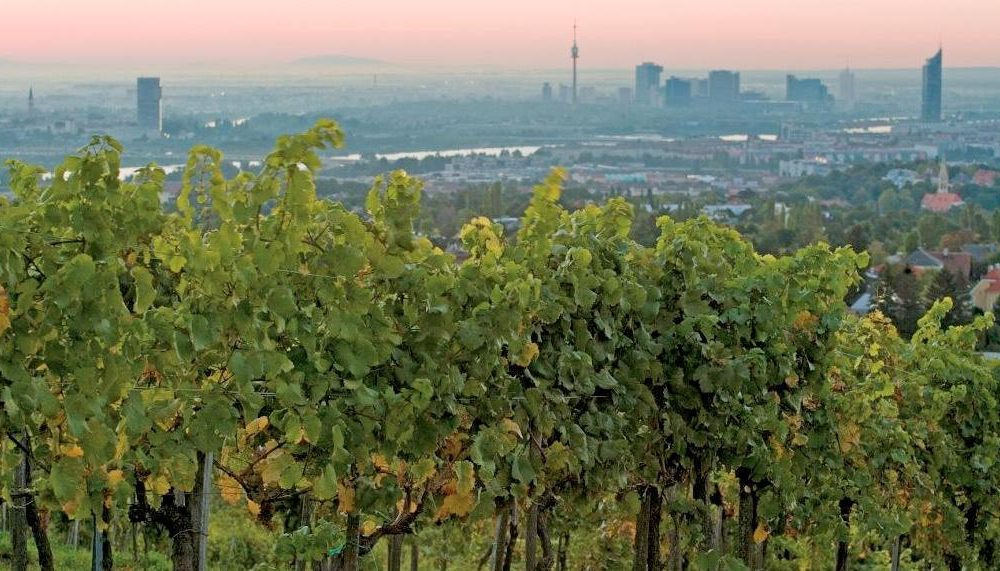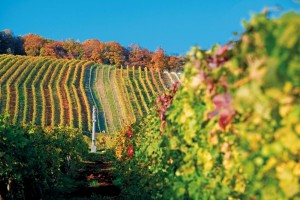Viennese wine and “Gemischter Satz”

A Viennese success story
This time I’ll disclose a personal opinion right from the start: Vienna has the most beautiful city perimeter of any major city I know – since vintners cultivate the land with plenty of heart, idealism and passion. The so-called “city” flows over into free country, the vineyards are an aesthetic and colorful sight from spring to autumn, the many Heurigen (wine taverns) invite people to taste, enjoy and relax… a special experience, and especially the consumption of Viennese wine has in recent years happily become par for the course even in Austria’s top restaurants. The Schick restaurants, as old-established Viennese restaurants, also concentrate on top-flight Viennese wines.
History, facts and figures today
When the ancient Romans turned the small Celtic village Vindobona into a border fortress on the Danube, they also met with the optimal prerequisites for winegrowing, which had already been practiced here – archaeological discoveries prove that wine was cultivated on the Nussberg, Kahlenberg and Bisamberg since 750 BCE (see also my blog entry on Viennese wine taverns).
And nowadays? 230 winegrowers on 680 hectares planted with vines in 6 districts with a vintage of 1.69 million liters, from Grüner Veltliner to Chardonnay all the way to Blauer Zweigelt – that’s how compact winegrowing can be. Vienna’s wine region stretches from Stammersdorf, Strebersdorf and Jedlersdorf in the northern part of the city, over the Danube to Nussdorf, Heiligenstadt, Grinzing, Sievering and Neustift am Walde, Dornbach and Ottakring into Mauer and Oberlaa to the south. With an area of 680 hectares, Vienna has the largest intra-urban vineyard area in the world (source: www.wienerwein.at). Urban city life, cozy wine tavern culture and traditional vintner craft are hardly contradictions in Vienna, but instead melt into a harmonious “wine bliss.”
A Viennese wine specialty – Gemischter Satz
What do you think of when you hear the term “field blend” (gemischter Satz)? First of all, surely no high-quality association comes to mind, and in actuality, the history of gemischter Satz consists of a series of misunderstandings.
Prior to the Second World War, gemischter Satz was grown and cultivated on nearly all of Austria’s vineyards – up to 20 different varieties were encountered mixed together on a single vineyard, for reasons of caution on the one hand, in order to avoid a total loss due to weather, and on the other hand one could guide the wine in a specific direction in this manner already in the vineyard. Neuburger and Weissburgunder lend body and structure, Riesling takes care of the acidity, Müller-Thurgau for the volume and early drinkability, Traminer and other varieties for that special touch. The grapes were all gathered on a single day, and if one variety was already a bit overripe, others were still unripe and the third group was just right.
This producing criterion also explains why gemischter Satz is not a varietal wine but rather a wine based on origin. The taste defines itself not due to any controlled composition (as with cuvees), but only due to tradition and experience, which work best together in a particular vineyard.
The switch to single grape variety planting at the beginning of the 1960s, strongly promoted by the public authorities, brought an end to gemischter Satz in those areas in which winegrowing could be industrialized. In Vienna, where the structures were small to tiny, many of the old facilities remain in existence – the Heuriger (wine tavern) public continued to demand the usual feuriger Grinzinger (“fiery Grinzinger”), the mineral Nussberger or the lighter Sieveringer.
In terms of marketing, these wines were difficult to sell, and the image of gemischter Satz therefore went downhill – compared to pure grape varieties, it was considered a blend of leftovers.
In one glass – Vienna for pleasure
Luckily, things now look different. The gemischter Satz is considered a mirror of the personality that extracted and cultivated it. The vintner decides on the composition of the grape varieties and explores what makes for his or her favorite wine. Only wines that consist of at least three grape varieties and that also stem from one and the same Viennese vineyard may be called Viennese gemischter Satz.
Dedicated Viennese vintners, such as the group “WienWein” (Christ, Cobenzl, Edlmoser, Mayer am Pfarrplatz & Wieninger) held and continue to hold gemischter Satz in high esteem, modernized the internal concepts and preserve its traditional basis. The lovely result brings personal drinking enjoyment and variety-rich pleasure at the highest level.
Florian Holzer (freelance author and journalist for Austrian and international publications, including Falter, À la Carte, Kurier, Neue Zürcher Zeitung am Sonntag, Süddeutsche Zeitung and others) created a lovely headline for gemischter Satz in A la Carte – Edition Wiener Wein, which I happily quote:
“Mischen [mixing] (for mission) is possible”!
This is 100% the case for Viennese gemischter Satz!
Image credits: © Wien Tourismus Louis Lammerhuber; © Raimo Rudi Rumpler.












